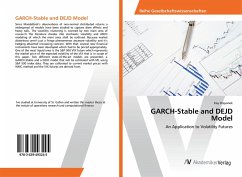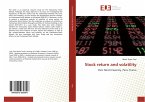Since Mandelbrot's observations of non-normal distributed returns a widespread of models have been studied to capture skew effects and heavy tails. The volatility clustering is covered by two main area of research. The literature divides into stochastic volatility and ARCH modeling of which the main ones shall be outlined. Because market distortions aren't just a fringe phenomenon anymore volatility and it's hedging attainted increasing concern. With that, several new financial instruments have been developed which had to be priced appropriately. One of the most liquid ones is the S&P 500 VIX future which represents the market price of the expected volatility of the VIX that is in scope of this paper. Two different state-of-the-art models are presented, a GARCH-Stable and a DEJD model that will be estimated with ML using S&P 500 index data. They are calibrated to current market prices with WMC method and the VIX futures are derived from.
Bitte wählen Sie Ihr Anliegen aus.
Rechnungen
Retourenschein anfordern
Bestellstatus
Storno








